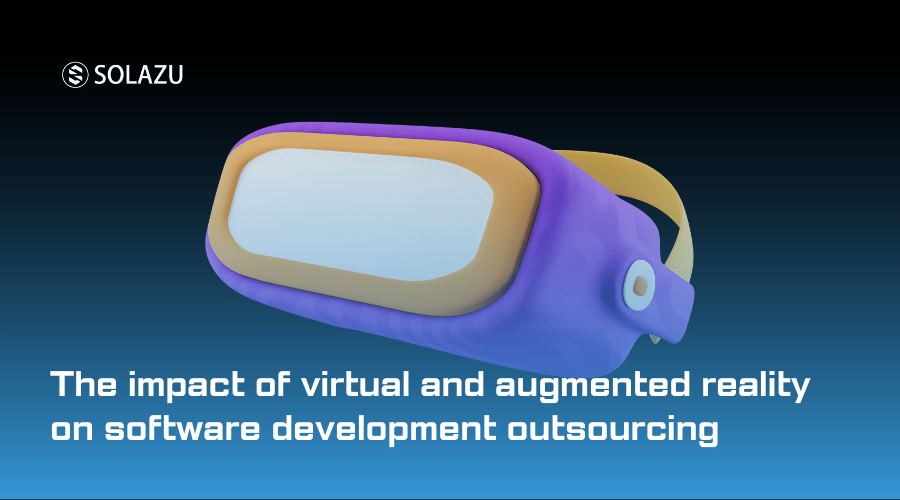Virtual and augmented reality (VR/AR) are rapidly evolving technologies that have significant potential to revolutionize the way we interact with our digital world. In recent years, VR and AR have become increasingly popular in the entertainment, gaming, and education industries. However, the potential applications of VR and AR extend beyond these areas, into fields such as healthcare, construction, and even retail. As a result, software development outsourcing is increasingly becoming an important part of the development process for VR/AR applications.
VR and AR are both immersive technologies that allow users to experience and interact with digital content in a more natural way. VR typically involves the use of a headset or other device that completely immerses the user in a simulated environment. AR, on the other hand, overlays digital content onto the real world through a smartphone, tablet, or other device. Both VR and AR require complex software development and integration of multiple components.
The development of VR and AR applications requires a unique set of skills and expertise. To build a successful VR or AR application, software developers must have an understanding of 3D modeling, computer graphics, and user experience design. In addition, developers must have experience with the specific platforms, engines, and tools used in VR and AR development.
Given the complexity of VR and AR development, outsourcing software development can be an effective way for businesses to access the necessary expertise and resources to develop successful VR and AR applications. Outsourcing allows businesses to tap into a global talent pool of developers with specialized knowledge and experience in VR and AR development.
One of the main benefits of outsourcing VR and AR development is the ability to access a larger talent pool of experienced developers. Many software development companies are now focused on building expertise in the development of VR and AR applications, which can be challenging to find in-house. Outsourcing to an experienced team of developers can reduce the time and cost of development while improving the quality of the final product.
Another advantage of outsourcing VR and AR development is the flexibility it provides. With outsourcing, businesses can adjust the size of the development team as needed, depending on the project’s requirements. This allows businesses to scale development resources up or down without having to hire or fire employees, which can be costly and time-consuming.
However, there are also challenges that come with outsourcing VR and AR development. Communication and collaboration can be difficult due to the complexity of the technology and the need for specialized expertise. Misunderstandings or miscommunications can lead to delays or errors in development, which can be costly and frustrating for all parties involved.
To mitigate these risks, it is important to have a clear and detailed development plan, with frequent communication and checkpoints throughout the development process. Teams must also have a clear understanding of their roles and responsibilities to ensure that everyone is working towards the same goal.
In conclusion, VR and AR technologies are rapidly evolving and have significant potential to transform the way we interact with digital content. The development of successful VR and AR applications requires a unique set of skills and expertise, which can be difficult to find in-house. Outsourcing software development provides access to a global talent pool of developers with specialized knowledge and experience in VR and AR development, which can help businesses reduce costs, improve quality, and accelerate development timelines. However, effective communication and collaboration are critical to the success of any outsourced VR and AR development project.
